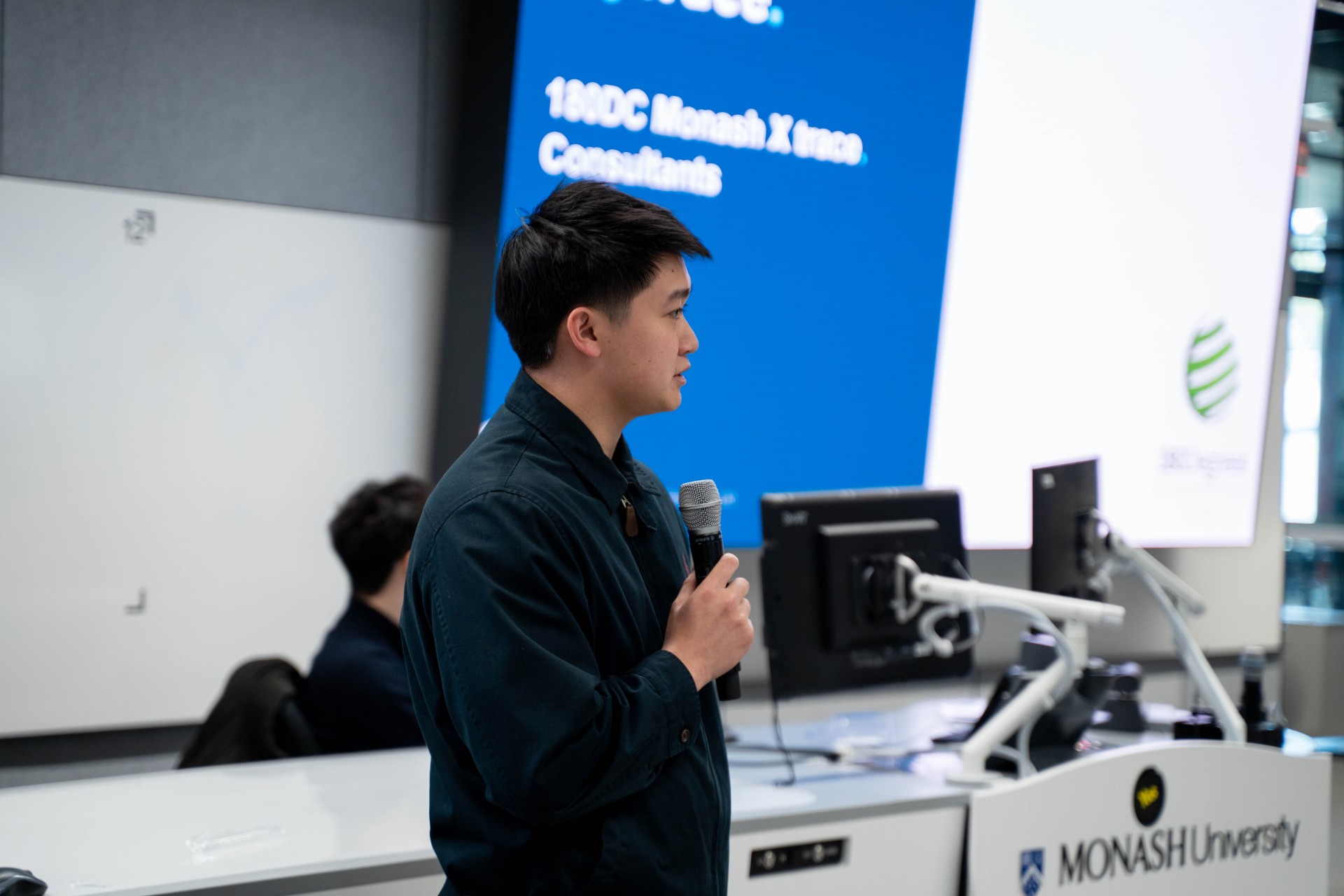Ready to turn insight into action?
We help organisations transform ideas into measurable results with strategies that work in the real world. Let’s talk about how we can solve your most complex supply chain challenges.

Across Australia and New Zealand, AI has quickly shifted from hype to reality. Supply chain teams are trialling demand forecasting algorithms that outperform traditional models. Procurement functions are using AI to automate spend analysis, flag risks in supplier contracts, and benchmark rates in near real time. For leaders, the promise of AI is compelling: reduced costs, greater agility, and sharper decision-making.
But here’s the catch. Technology alone does not deliver outcomes. AI tools may be smarter, faster, and more capable than past systems, but their value hinges on people and processes adapting around them. This makes change management – the structured approach to transitioning people, processes, and organisations – not less important in an AI-enabled world, but far more critical.
In fact, many organisations underestimate how disruptive AI can be. Unlike past IT projects, which largely digitised existing processes, AI changes how work is done, who does it, and what decisions they make. That’s why supply chain and procurement projects involving AI must now be approached with a much greater emphasis on change management, stakeholder engagement, and culture building.
The Shift AI Brings to Supply Chain and Procurement
AI is reshaping supply chain and procurement in several ways that directly impact people, roles, and ways of working.
1. Decision-Making Moves Closer to the Algorithm
Traditional supply chain planning relied on human analysts, planners, and category managers to make decisions based on data extracts and reports. With AI, models can generate forecasts, optimise networks, or suggest suppliers in seconds. This shifts decision-making closer to the algorithm, requiring humans to trust, validate, and act on recommendations.
2. Roles and Skills Are Changing
Procurement professionals are spending less time crunching data in Excel and more time interpreting insights, challenging assumptions, and engaging suppliers. Supply chain planners are moving from “manual adjustment” roles to scenario planners and risk managers. These are significant shifts in job scope, capability, and mindset.
3. Pace of Change Is Faster
AI deployments are not once-off system upgrades. They evolve rapidly as models are retrained, new data sources are added, and business needs shift. This constant iteration creates a rolling change environment rather than a “set and forget” model.
4. Expectations Are Higher
Executives expect AI projects to deliver tangible ROI quickly – sometimes within months, not years. Without effective change management, adoption lags, outcomes stall, and the technology is unfairly labelled a failure.
Why Change Management Matters More Than Ever
In this AI-driven landscape, change management isn’t a “nice to have.” It’s the difference between a successful transformation and another costly IT project that never delivers.
Driving Adoption and Trust
AI outputs can feel like a “black box” to users. Without explanation, teams may distrust recommendations, ignore alerts, or revert to old ways of working. Change management helps build confidence through education, transparency, and ongoing engagement.
Reshaping Roles and Responsibilities
AI doesn’t eliminate people; it redefines their value. Procurement officers may move from tactical purchasing to supplier strategy. Planners may shift from forecasting to risk scenario testing. Structured change management ensures role clarity, capability building, and alignment of expectations.
Embedding New Ways of Working
AI success relies on behavioural shifts: managers using dashboards daily, buyers trusting automated alerts, or operators escalating exceptions flagged by algorithms. Change management embeds these behaviours into the culture, turning adoption into habit.
Aligning Stakeholders
AI often impacts multiple functions – finance, IT, supply chain, procurement, operations. Without structured change management, misaligned expectations and competing priorities derail projects.
Sustaining Momentum
Unlike ERP implementations, AI systems evolve continuously. Change management provides governance and frameworks for ongoing adoption, retraining, and communication – keeping momentum alive well beyond go-live.
Key Change Management Challenges on AI Projects
Australian and New Zealand organisations face common hurdles when embedding AI in supply chain and procurement:
- Resistance to Change
– Employees worry AI will replace their roles or erode professional judgement. - Skills Gap
– Teams may lack confidence in interpreting AI outputs or working with new digital tools. - Overestimation of AI’s Readiness
– Leaders sometimes assume AI is “plug and play,” overlooking the organisational readiness required. - Cultural Barriers
– Some workplaces prioritise experience and intuition over data-driven insights, slowing AI adoption. - Fragmented Ownership
– With IT, procurement, and operations all involved, no single function drives holistic change. - Short-Termism
– Pressure to prove quick results may lead to rushed deployments with poor change management foundations.
Best Practices for Change Management on AI-Enabled Projects
Organisations that thrive in AI-enabled supply chain and procurement transformations adopt structured change management practices.
1. Start with Clear Purpose and Vision
Employees need to know why AI is being introduced, not just what it does. Is the goal to improve service levels? Reduce costs? Enhance sustainability? Clear communication of purpose fosters alignment.
2. Engage Early and Often
Involving end-users in scoping, testing, and piloting builds ownership. Teams that feel consulted are far more likely to adopt.
3. Focus on Capability Building
Investing in training is critical. It’s not just about technical skills but also developing data literacy, critical thinking, and comfort with digital tools.
4. Make the “Black Box” Transparent
Explain how algorithms work in plain language. Provide evidence of accuracy. Use dashboards that highlight assumptions, confidence levels, and exceptions.
5. Redesign Roles and Processes
Don’t simply layer AI over existing ways of working. Revisit job descriptions, workflows, and decision rights to ensure the organisation supports new behaviours.
6. Build Governance Structures
Set up steering committees, user forums, and feedback loops. Change management is ongoing, not just at go-live.
7. Measure and Celebrate Adoption
Track not just technical performance but human adoption metrics – system usage rates, decision alignment, satisfaction. Celebrate early wins to reinforce positive behaviours.
The Link Between Change Management and Project ROI
Research consistently shows that projects with strong change management deliver higher ROI. In AI-enabled supply chain and procurement projects, the link is even clearer:
- Without adoption – algorithms go unused, insights are ignored, and the investment fails.
- With adoption – insights become embedded in daily decisions, productivity improves, and strategic outcomes are realised.
For boards and executives, this makes change management not a side cost but a core investment in ensuring ROI.
The Australian and New Zealand Context
AI adoption in supply chain and procurement is accelerating across Australia and New Zealand. Retailers are testing demand forecasting models. Universities are exploring AI for procurement spend categorisation. Mining companies are investing in AI-driven maintenance scheduling.
But many organisations face unique regional challenges:
- Talent shortages – limited availability of AI-ready supply chain talent.
- Budget scrutiny – projects must prove value in tight cost environments.
- Geographic spread – national networks with dispersed teams make consistent change management harder.
- Regulatory oversight – government agencies and public institutions require transparency and accountability in AI adoption.
These factors mean structured, pragmatic, and locally relevant change management is essential for ANZ organisations.
How Trace Consultants Can Help
At Trace Consultants, we understand that AI is reshaping supply chain and procurement – but technology is only half the story. The other half is people, processes, and culture.
We support Australian and New Zealand organisations by:
- Embedding structured change management in every supply chain and procurement transformation, ensuring adoption is built into the project plan, not bolted on at the end.
- Designing role and process transitions so that employees are clear on how their responsibilities evolve in an AI-enabled environment.
- Building capability and confidence in teams to interpret, trust, and act on AI insights.
- Engaging stakeholders across functions – procurement, operations, IT, finance – to align priorities and governance.
- Providing independent guidance – ensuring solutions are pragmatic, culturally aligned, and focused on measurable business outcomes.
Our approach blends deep operational knowledge of supply chain and procurement with proven change management frameworks. The result is not just technology adoption, but sustainable transformation.
Looking Forward – Change Management as a Competitive Advantage
In the coming years, AI will only become more embedded in supply chain and procurement. Those who treat change management as an afterthought will struggle with adoption, waste investment, and erode trust. Those who treat change management as a strategic enabler will unlock competitive advantage.
Effective change management means:
- Teams embrace AI as a tool, not a threat.
- Processes evolve to capture efficiency and agility.
- Organisations sustain momentum in a rapidly changing digital landscape.
For ANZ organisations, the competitive gap between those who invest in change management and those who don’t will grow wider.
AI is revolutionising supply chain and procurement, but the greatest barrier to success isn’t technology – it’s people. Change management is now more important than ever, ensuring that AI projects deliver on their promise of cost efficiency, agility, and improved outcomes.
For property-based businesses, retailers, healthcare providers, universities, government agencies, and manufacturers alike, the message is clear: don’t underestimate the human side of AI adoption.
At Trace Consultants, we help organisations across Australia and New Zealand bridge the gap between technology potential and business reality through structured, pragmatic, and effective change management.
The question is: as AI transforms your supply chain and procurement functions, are you managing the change – or is the change managing you?
Ready to turn insight into action?
We help organisations transform ideas into measurable results with strategies that work in the real world. Let’s talk about how we can solve your most complex supply chain challenges.









